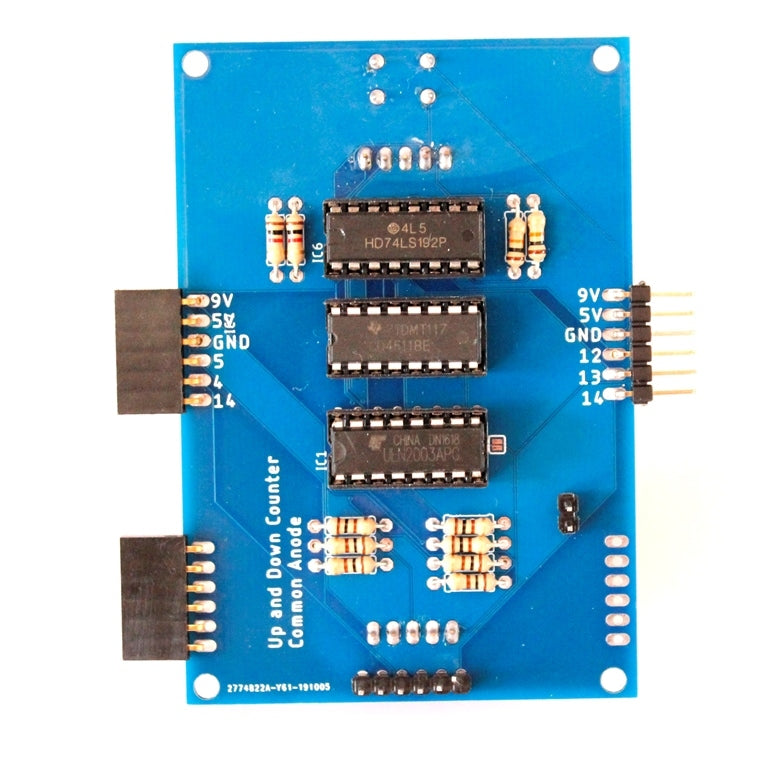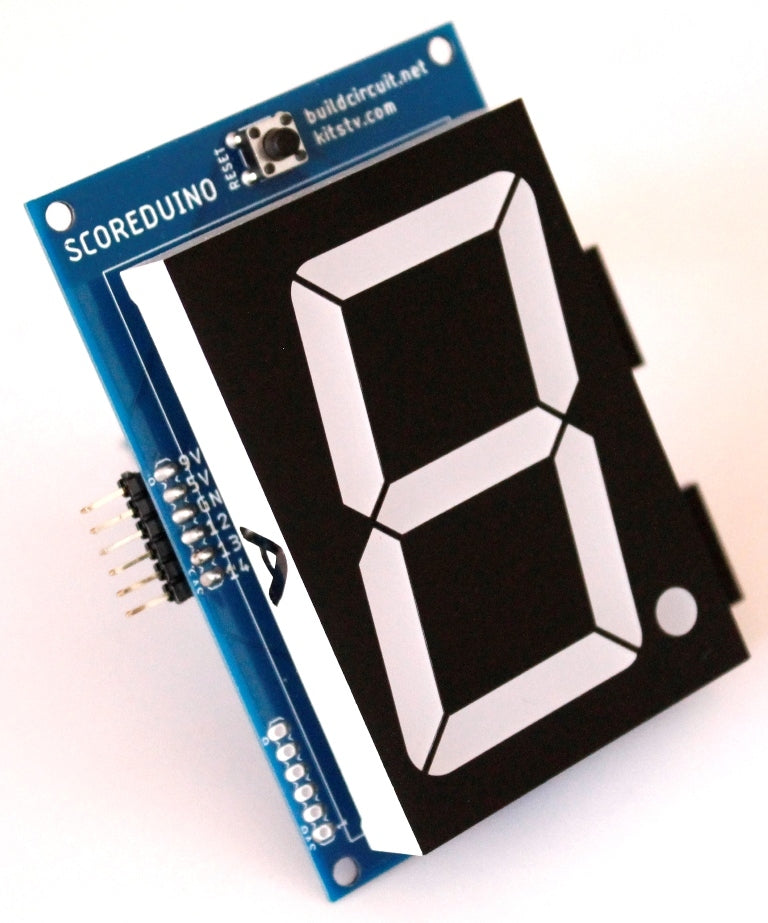CD4026- 1 digit up counter module
US $4.95








This is a 74LS192 based up and down counter driver module for driving 2.3 inches seven segment display. The module has headers on two sides to receive up/down count signals and to concatenate with another driver module.
The module can be triggered with NE555, flashing LED, and Arduino. It can also be triggered by anything that generates a clock pulse. 
Limitation:
This is basically an UP and DOWN counter module. It either counts up or down, that's it. Though it can be used with Arduino, please be mindful of its limitation, it is not like any other drivers which display any specific number. However, there are some possibilities also. Suppose, to display a number, let's say, 95, you need to send count pulse for 95 times to the module and it takes less than 1 second to count from 00 to 95. You won't even notice that the Arduino counted 95 times.
However, if you want to display, for example, 886, it will take around 5 seconds to count from 000 to 886. Therefore, the module may become impractical for more than 3 displays.
Applications:
This is just a by-product of a digital Scoreboard that I had previously built. I was designing a table tennis scoreboard and I noticed that there are no 2.3" seven segment display drivers available. So, I derived the idea of this product from the scoreboard.
What makes it special?
List of components used:
Can the driver increase or decrease a count for any specific sensor value? Yes, it does. I have made a video that clearly shows how you can use one button to increase the count and the other decreases the count.
You cannot make a temperature display board using this module. It is just a counter that counts up or down
Pinouts on one side:
Pinouts on the other side:
Package includes:
It works ‘strictly’ with 9V power supply. Do not exceed more than 9V.
SHIPPING
Our default shipping method is Registered International Post with a tracking code. Alternatively, you may opt for express shipping via DHL or FedEx.
Please note that we endeavor to ship all orders within 24 to 48 hours. The typical delivery time frame ranges between 2 to 4 weeks.
Kindly be aware that unforeseen circumstances, including customs or postal delays, may occasionally affect delivery times beyond our control.
Customers are responsible for any customs charges and should verify their country's customs policy.
RETURNS
If you are dissatisfied with the product, you may initiate a return within one month from the date of delivery. Please ensure that the product is sent back to our address in Sydney, Australia. Kindly note that all shipping charges associated with the return are the responsibility of the customer.
Copyright © BUILDCIRCUIT.COM and SCOREDUINO.COM. All Rights Reserved.